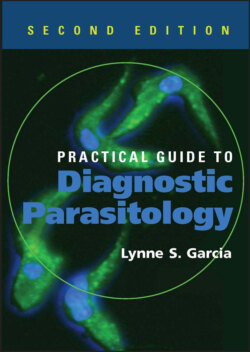Читать книгу Practical Guide to Diagnostic Parasitology - Lynne Shore Garcia - Страница 50
На сайте Литреса книга снята с продажи.
Ciliates
ОглавлениеCiliates are single-celled protozoa that move by means of cilia and are acquired through fecal-oral transmission. Balantidium coli is the only human pathogen in the group. Hosts include pigs, wild boars, rats, primates (including humans), horses, cattle, and guinea pigs. Infection is transmitted within or between these species by fecal-oral transmission of the infective cysts. Pigs are the most significant reservoir hosts, although they show few if any symptoms. Following ingestion, excystation occurs in the small intestine, and the trophozoites colonize the large intestine. The cilia beat in a coordinated rhythmic pattern, and the trophozoite moves in a spiral path. They have both trophozoite and cyst stages in the life cycle, and both stages contain a large macronucleus and a smaller micronucleus. These protozoa have a distinct cell mouth (cytostome), cytopharynx, and less conspicuous cytopyge (anal pore). These organisms are considerably larger than the majority of the intestinal protozoa and can be mistaken for debris or junk when seen in a permanent stained smear. The concentration wet preparation examination is recommended.
